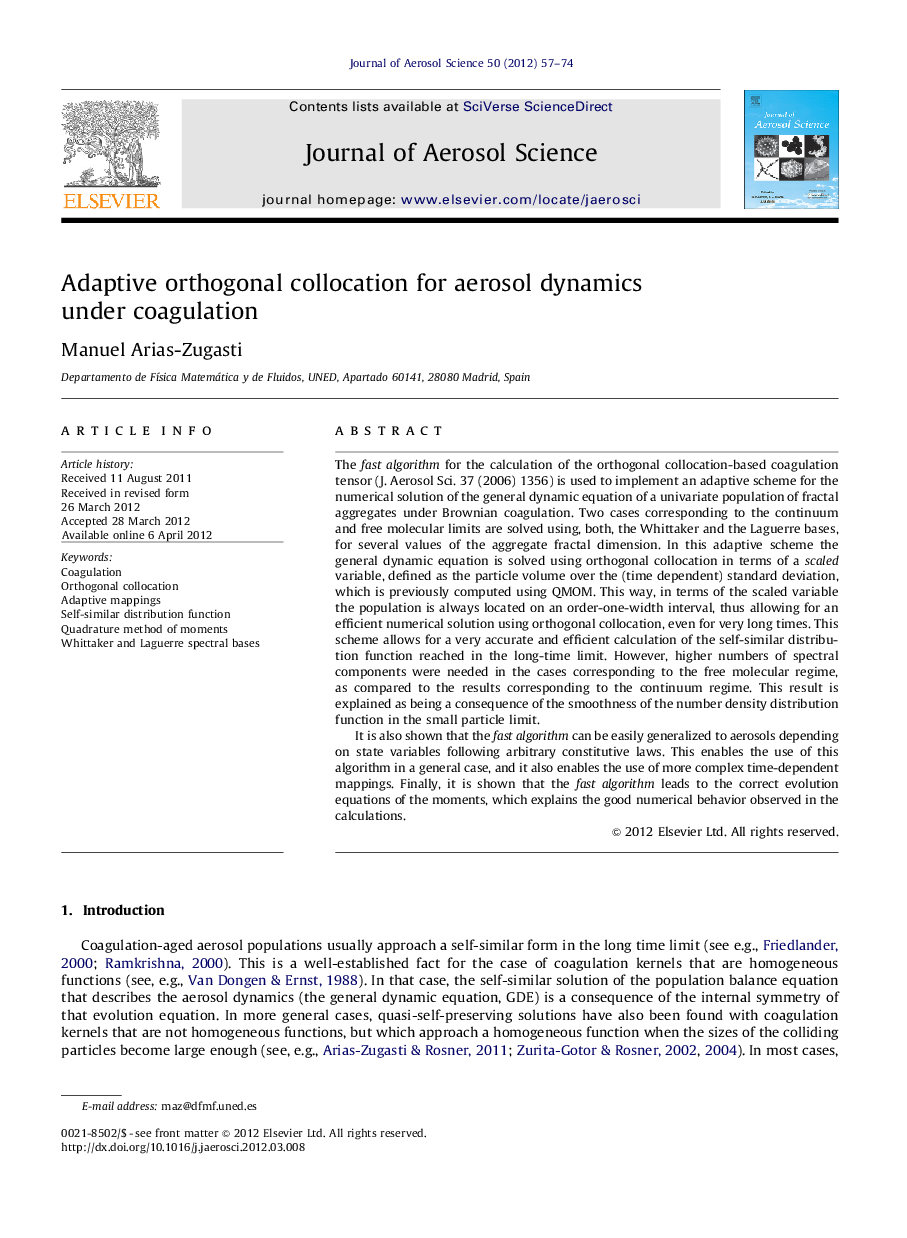| کد مقاله | کد نشریه | سال انتشار | مقاله انگلیسی | نسخه تمام متن |
|---|---|---|---|---|
| 4452576 | 1620773 | 2012 | 18 صفحه PDF | دانلود رایگان |

The fast algorithm for the calculation of the orthogonal collocation-based coagulation tensor (J. Aerosol Sci. 37 (2006) 1356) is used to implement an adaptive scheme for the numerical solution of the general dynamic equation of a univariate population of fractal aggregates under Brownian coagulation. Two cases corresponding to the continuum and free molecular limits are solved using, both, the Whittaker and the Laguerre bases, for several values of the aggregate fractal dimension. In this adaptive scheme the general dynamic equation is solved using orthogonal collocation in terms of a scaled variable, defined as the particle volume over the (time dependent) standard deviation, which is previously computed using QMOM. This way, in terms of the scaled variable the population is always located on an order-one-width interval, thus allowing for an efficient numerical solution using orthogonal collocation, even for very long times. This scheme allows for a very accurate and efficient calculation of the self-similar distribution function reached in the long-time limit. However, higher numbers of spectral components were needed in the cases corresponding to the free molecular regime, as compared to the results corresponding to the continuum regime. This result is explained as being a consequence of the smoothness of the number density distribution function in the small particle limit.It is also shown that the fast algorithm can be easily generalized to aerosols depending on state variables following arbitrary constitutive laws. This enables the use of this algorithm in a general case, and it also enables the use of more complex time-dependent mappings. Finally, it is shown that the fast algorithm leads to the correct evolution equations of the moments, which explains the good numerical behavior observed in the calculations.
► A simplified derivation of the fast algorithm (J. Aerosol. Sci. 37 (2006) 1356) is shown.
► This algorithm is successfully used to solve the GDE in several relevant cases.
► The conservation properties of the fast algorithm are explored.
► A convergence analysis showing accuracy and calculation times is presented.
► A possible multivariate generalization of the fast algorithm is mentioned.
Journal: Journal of Aerosol Science - Volume 50, August 2012, Pages 57–74